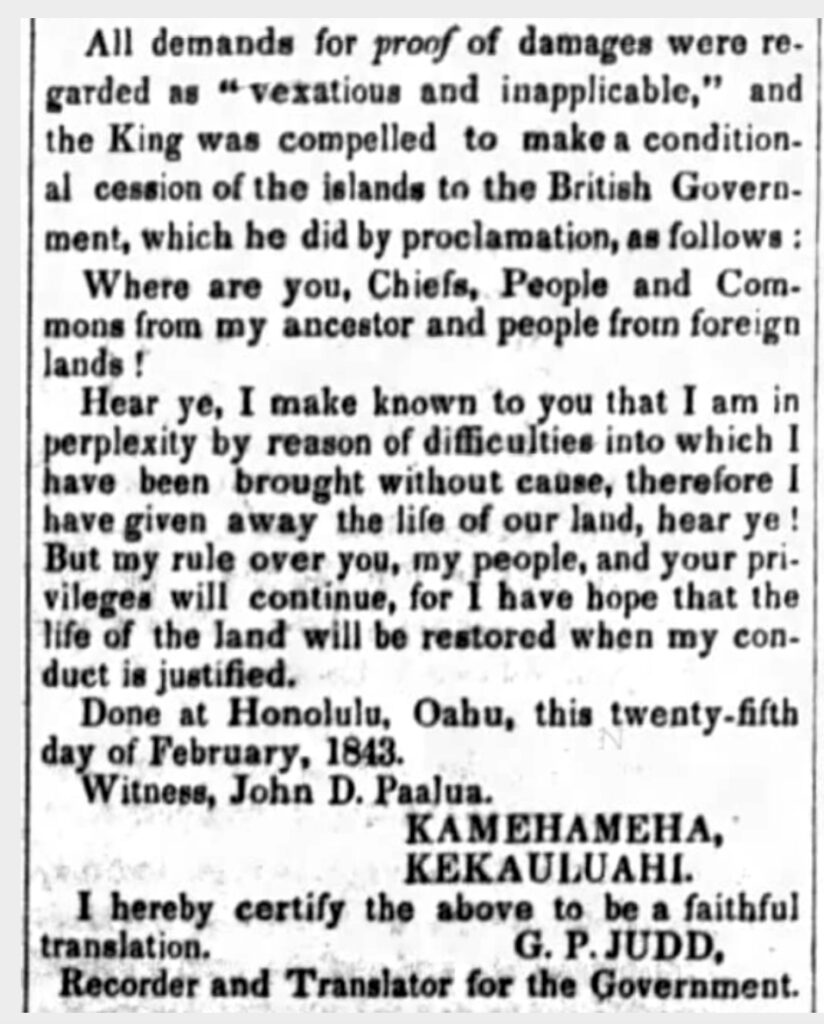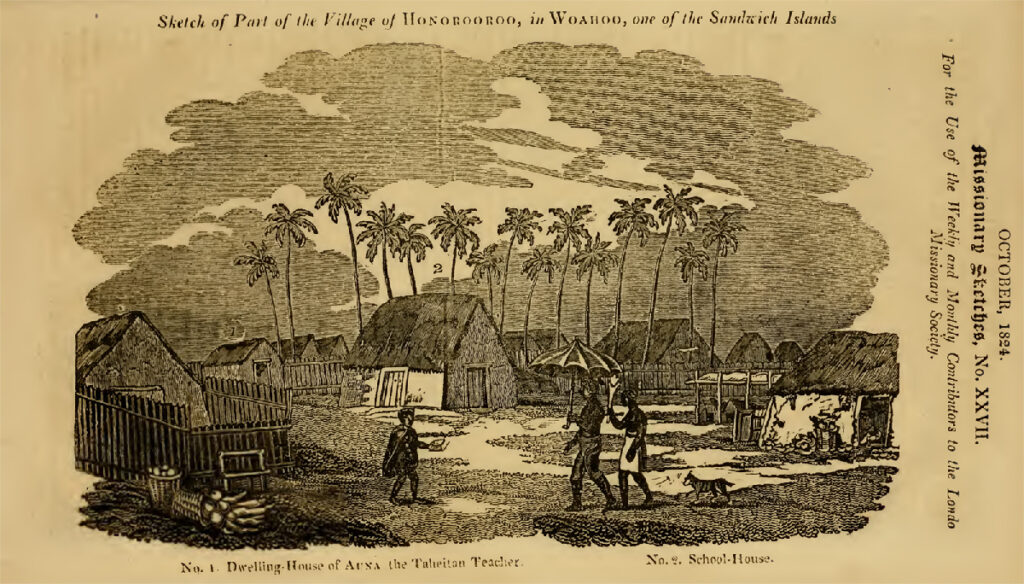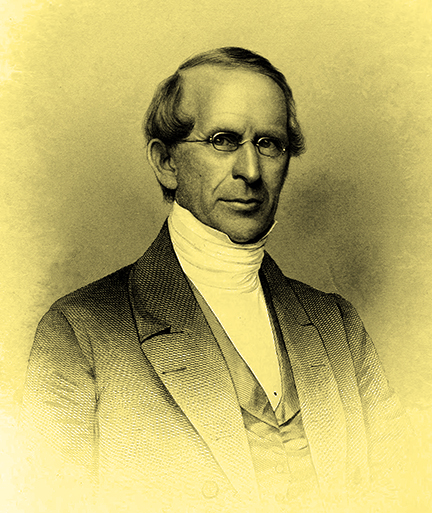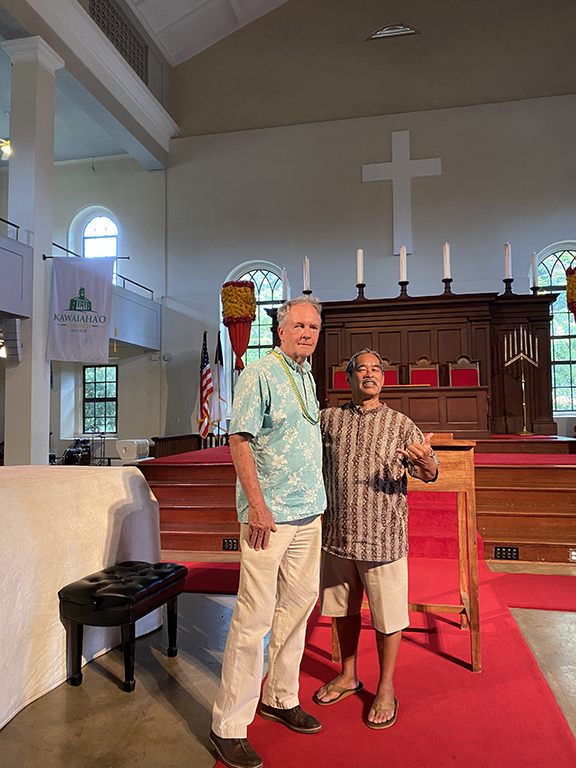
My close Kaua‘i friend Leonard Mahoe (r.), the CRU City Neighbors ministry representative on Kaua‘i, joined me at Kawaiaha‘o Church in Honolulu on July 28, 2020 for the filming of A New Look at the Memoirs of Henry Obookiah. Leonard grew up attending Kawaiaha‘o Church in the 1950s and 60s. The 40-minute talk is one of the Kawaiaha‘o Bicentennial Speaker series and is set to first air on Sunday, August 16 at 4 p.m. HST
The Kawaiaha‘o Church Bicentennial Committee graciously invited me to be the August 2020 speaker in their ongoing Bicentennial Speaker series. I presented A New Look at the Memoirs of Henry Obookiah inside the historic Kawaiaha‘o sanctuary on July 28, 2020. The talk is scheduled to air on Sunday, August 16 at 4 p.m. HST on the Kawaiaha‘o TV YouTube.com channel.
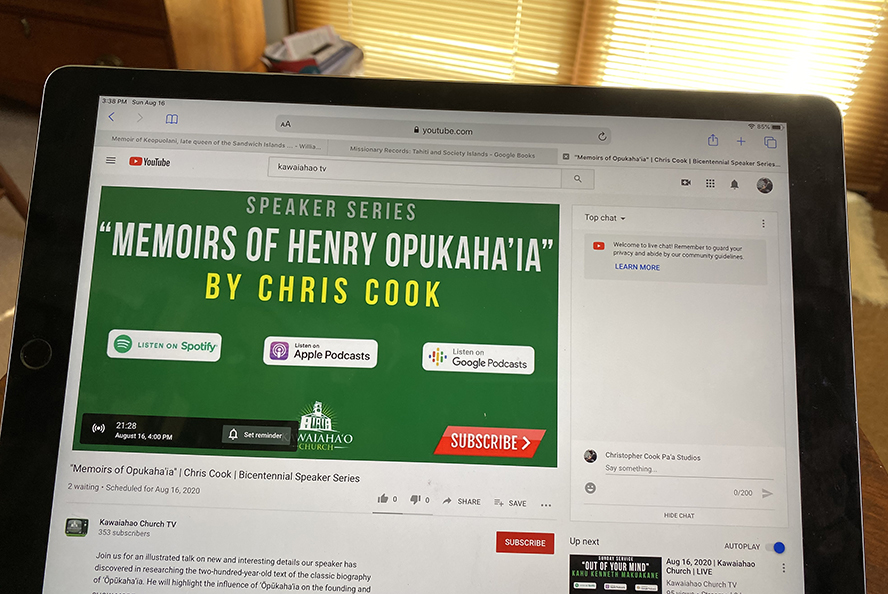
My talk on Henry Opukaha‘ia aired on Sunday, August 16, 2020 on the Kawaiaha‘o Church TV Youtube.com channel. A Q&A time aired on Zoom followed the broadcast of my talk, which was taped in the Kawaiaha‘o sanctuary in late July. My talk is scheduled to be rebroadcast, watch here for an exact date and time.
Coincidentally, August 16, 2020 marks the 50th anniversary of my arrival in Hawai‘i in summer 1970 to attend the University of Hawai‘i at Mānoa. Looking back I am very thankful for the many blessings I have enjoyed in the islands of Hawai‘i where I have spent most of my adult life. The invitation to speak at Kawaiaha‘o is especially special to me.
In A New Look at the Memoirs of Henry Obookiah I present new details about the life and times of Ōpūkahai‘ia – Henry Obookiah, the first Native Hawaiian Christian. The 40-minute talk offers a preview of material appearing in my new book Preparing the Way, a 160-page full-color pictorial book created to mark the Hawai‘i Mission Bicentennial. The talk is also based on material I first presented in my 2015-released biography of Ōpūkahai‘ia, The Providential Life & Heritage of Henry Obookiah.
Mahalo to Haunani Hendrix who produced the segment, and Malia Ka‘ai-Barrett who introduced me to begin my talk, both on behalf of the the Kawaiaha‘o Bicentennial Committee. I joined Malia and Kahu Ken Makuakane on the stage at Park Street Church in Boston in October 2019 during the Hawai‘i Mission Bicentennial commemoration held in New England to mark the departure of the pioneer Sandwich Islands Mission company to Hawai‘i. Malia is a premier vocalist in Hawai‘i, I was honored by her introduction, and by Haunani’s production skills.
Following the first airing of A New Look at the Memoirs of Henry Obookiah I will be fielding questions about my talk via Zoom at the Kawaiaha‘o TV channel on YouTube.com. The questions will be combined with the video of my talk and will be available for viewing at the Kawaiaha‘o TV channel.
The July speaker in the Kawaiaha‘o Bicentennial series was Kaipo‘i Kelling. Kaipo‘i is a fantastic teller of mo‘olelo of Hawai‘i, ask anyone who has listened to his talks. He is a Hawaiian language instructor and historian, in addition to being an elementary school teacher, with a focus on missionary era Honolulu. He presented What Makes Kawaiaha‘o A Wai Pana (famous place). Kaipo‘i’s interesting and intriguing talk focused on the historical setting of the church in Honolulu in an area considered sacred in pre-‘Ai Kapu overthrow days.
Kawaiaha‘o historian Keiko Denbeau presented in June, using the historic plaques that grace the walls of sanctuary at Kawaiaha‘o to tell the story of interesting chapters in the historic church’s history.
Additional speakers in the series are posted at the Kawaiahao TV channel.
Mahalo to former Kawaiaha‘o pastor Kahu Curt Kekuna and his wife Becky Kekuna for their kokua in this project.
